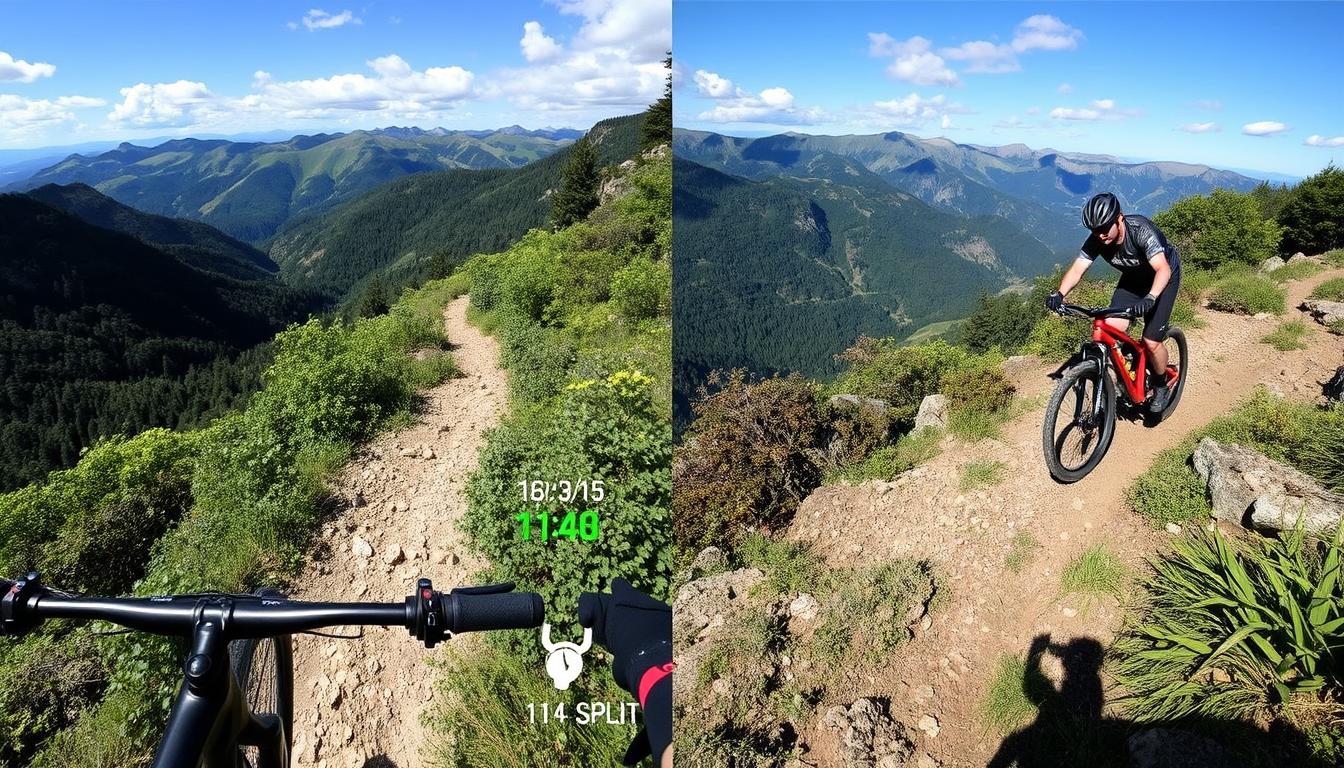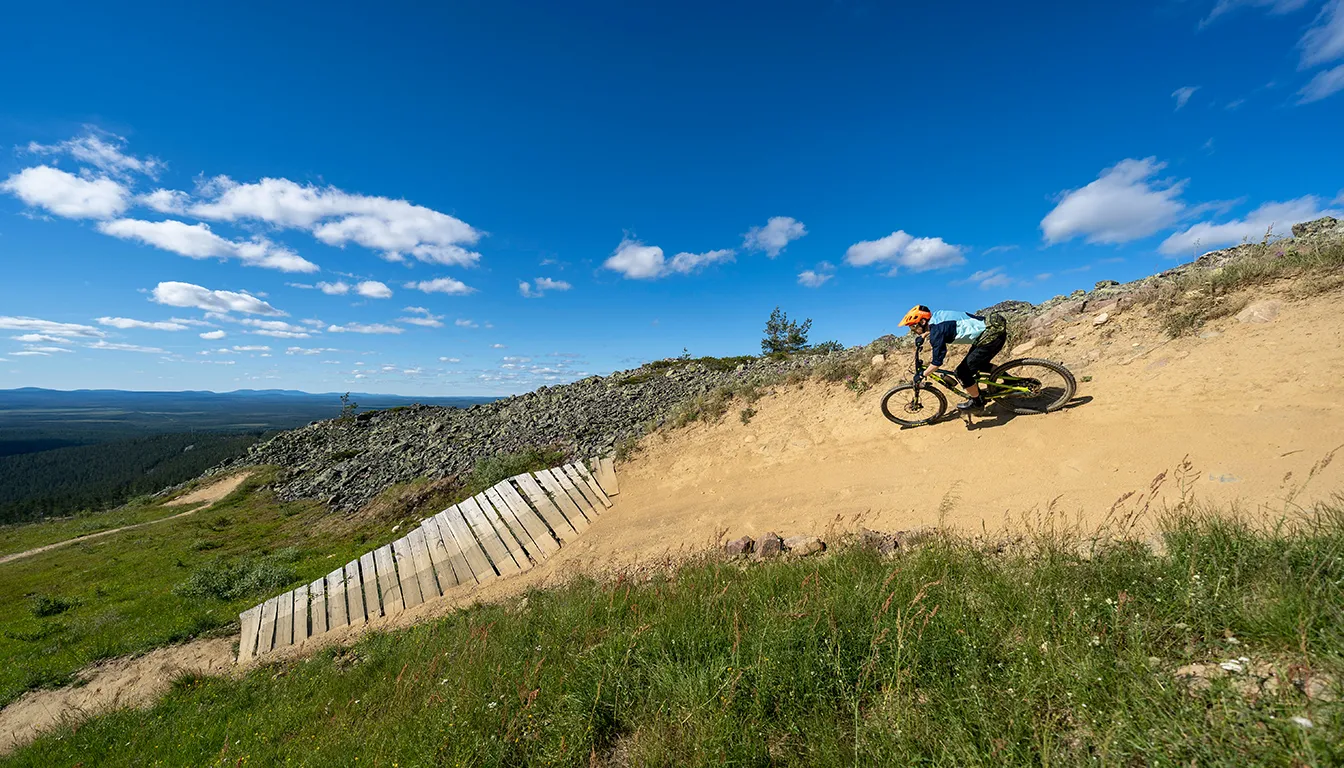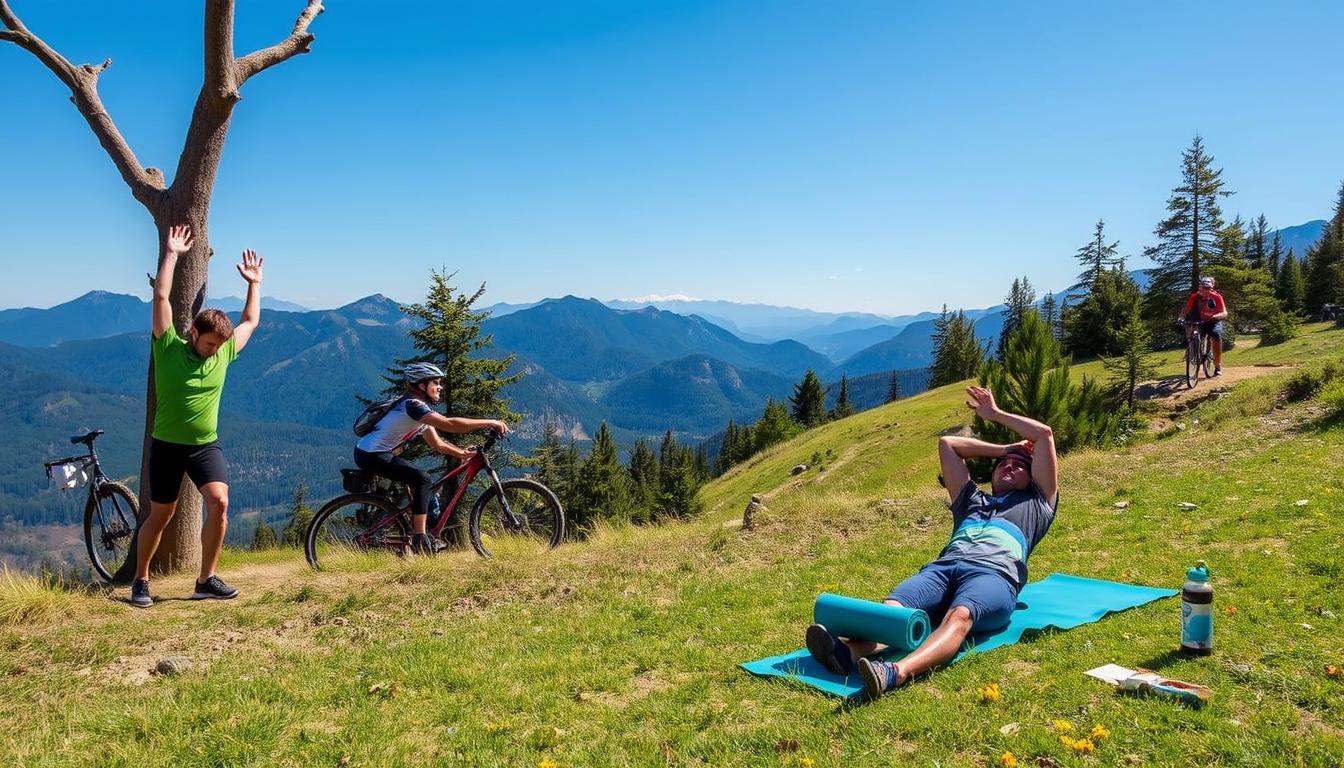Mountain biking, especially cross-country racing, demands high-level performance again and again. Success requires not just a robust aerobic base but also the power for intense bursts. Adding interval training to your mountain biking routine can greatly enhance your fitness, meeting these needs.
Interval workouts are key for mountain bikers looking to up their game. These sessions lead to better fitness and performance. They help you conquer tough terrains and keep up your speed. Short workouts, even just 30 to 40 minutes, are very effective. Doing two to three high-intensity interval training (HIIT) sessions weekly, with proper rest, will boost your cycling skills.
Next, we’ll explore how to mix interval training into your mountain biking plan. This will help you face the specific challenges of races. You’ll develop a comprehensive training programme. It will improve your endurance, strength, and biking efficiency.
Understanding the Demands of Mountain Biking
Mountain biking brings special physical challenges. Riders must know these to do their best in races. They need a good understanding of mountain biking’s demands, focusing on aerobic and anaerobic fitness. Both are key in handling the challenges of XC racing. This includes efforts that last and quick bursts of power.
The Importance of Aerobic and Anaerobic Fitness
Aerobic fitness helps mountain bikers keep up high energy levels for a long time. This stamina lets riders perform better over a 90-minute race. They use less of their maximum endurance and oxygen capacity. Anaerobic fitness, however, is for short, powerful speed bursts. These are crucial during races for quick surges or tricky parts. About 25% of the time, riders push beyond their highest aerobic level. This shows the need for both energy systems to work well.
Variability in Power Output During Races
During a race, mountain biking power changes a lot because of different terrains and how riders choose to pace themselves. Riders often use 90-95% of their top power. Their effort isn’t the same all through the race. They equally spend time in various power zones, with a bit more in the lowest and highest efforts. Also, XC racing has unique challenges. Racers must adjust how hard they push based on these demands.
Benefits of Mountain Biking Interval Training
Mountain biking interval training has many benefits. It helps cyclists get better at their sport. These advantages are not just about lasting longer; they help in many essential skills needed for riding success.
Improving Aerobic Endurance
Interval training is key for better aerobic endurance. It is vital for doing well in long rides and races. It mixes short, intense pedalling bursts with rest. This improves your aerobic system and overall fitness. For more on training, check out this guide on interval training tailored for bikers.
Enhancing Lactate Threshold and VO2max
Interval training also boosts lactate threshold and VO2max. It allows cyclists to work harder before fatigue sets in. This is important for uphill and tough parts of a ride. With dedicated training, riders can use oxygen more efficiently and perform better.
Time Efficiency and Training Effectiveness
Interval training is perfect for cyclists with tight schedules. It packs big training gains into short sessions. Riders get fit faster, saving time. This is great for those who race or do other bike activities. For better results, mix it with strength exercises. Look into tips from this advanced mountain biking guide.
Effective Interval Training Workouts for Mountain Bikers
Creating interval workouts for mountain bikers boosts fitness and performance. It’s about finding the perfect mix of long, steady stretches and short, sharp bursts. This ensures you’re ready for the sport’s challenges and recover properly. Here, we’ll show you workouts that increase your endurance, power, and speed.
Long Intervals for Endurance and Strength
Long intervals improve your aerobic fitness and muscle endurance. Dr. Seiler’s tip is to do four rounds of 4 to 8-minute efforts. You should rest for about two minutes in between. Aim for 120% of your Functional Threshold Power (FTP). This method enhances endurance and strength, helping you during long rides.
Short, High-Intensity Intervals for Power and Speed
Short, intense intervals boost your power and speed. They require pushing your heart rate to its limits. This helps your muscles adapt. Most people’s hearts beat at 186-187 beats per minute during these. Pick simple trails so you can focus on power. This makes your training more effective.
Incorporating Rest and Recovery Times
Adding rest periods to your routine is crucial. It ensures your body adapts well to the workouts. Divide your training into effort and recovery segments. This allows for proper rest. Use tires with good grip for better recovery. They help you maintain proper position on your bike. Controlled breaks between efforts prevent too much training and increase performance benefits.
Strategically Implementing Mountain Biking Interval Training into Your Routine
To add interval training to your mountain biking schedule, plan carefully. This ensures you get better and have time to recover. A good training structure for cyclists mixes intense intervals with long rides. It also focuses on improving your biking skills.
It’s key to gradually up the challenge of your workouts. This gets you ready for races. For instance, the Denali +3 workout includes tough intervals that boost your power.
Keeping your endurance up is just as crucial. Try workouts like Collins +1. It involves riding at a moderate intensity and finishes with sprints. This approach boosts your fitness and preps you for races.
Plan your training phases smartly to peak at the right time. Use workouts like Backbone +3 to get used to race intensity. Adding longer rides builds your endurance too. Tailor each phase to improve the skills you need for your races, be it mountain biking or cyclocross.
Remember to rest and listen to what your body needs. A varied training plan, including VO2 max and threshold workouts, helps keep things balanced. Check your equipment and get your tapering right to be fully ready for race day.
If you want to get better, tailor your training to your fitness and goals. There are many plans out there, ranging from 3 to 40 weeks, for all skill levels. For more tips, check out this great downhill mountain biking advice.
Conclusion
Mountain biking needs a broad training strategy. This includes interval training to boost both aerobic and anaerobic fitness. Interval workouts offer big benefits for cycling performance improvement. They help riders become much better at their sport.
Research shows high-intensity intervals increase endurance and strength. They are crucial for athletes wanting to win in competitions. Such training methods bring great results for stamina and power. This means riders get better at their sport. An interval training recap reminds us of its impact.
To achieve success, bikers should combine these techniques with good nutrition and rest. Adding interval training doesn’t just improve performance. It makes the cycling journey more enjoyable and helps bikers achieve their goals.
FAQ
What is interval training in mountain biking?
Interval training involves swapping between high-effort and rest periods. It boosts your aerobic and anaerobic fitness. This is key for cross-country races in mountain biking.
How does mountain biking differ from other cycling disciplines?
Mountain biking, like XC racing, needs both long-lasting stamina and quick bursts of power. Riders face diverse challenges including shifts in effort and recovery times.
What are the key benefits of incorporating interval workouts into my mountain biking routine?
Interval training improves your stamina, lactate threshold, and VO2max. It’s a time-saver too, making your training both efficient and effective.
How should I structure my interval training workouts?
Mix long intervals for endurance with short, sharp bursts for speed in your workouts. Remember to rest between these intervals to avoid overtraining and ensure the best results.
What is the best way to integrate interval training into my overall cycling schedule?
Balance is key. Mix endurance rides, skills sessions, and rest. Increase your interval training’s intensity as races get closer to peak at the right time.
How can I monitor my progress in mountain biking interval training?
Keep track of your power, heart rate, and recovery times during training. Periodic lactate threshold and VO2max tests will also show your fitness levels.
Are there specific types of terrain I should focus on during interval training?
Yes, training across different terrains improves your skills. Include climbs, descents, and technical sections that mimic race conditions for the best preparation.








